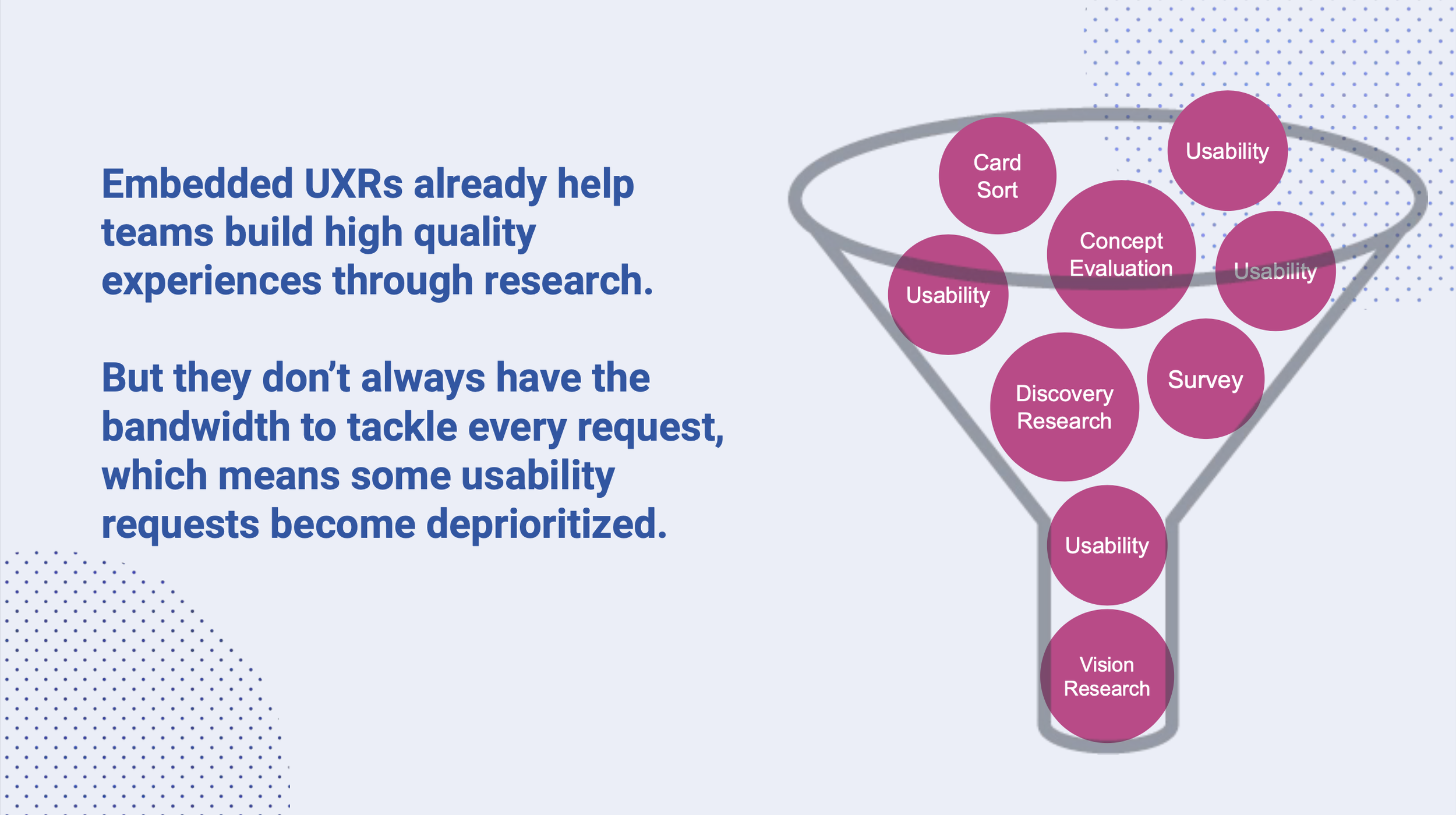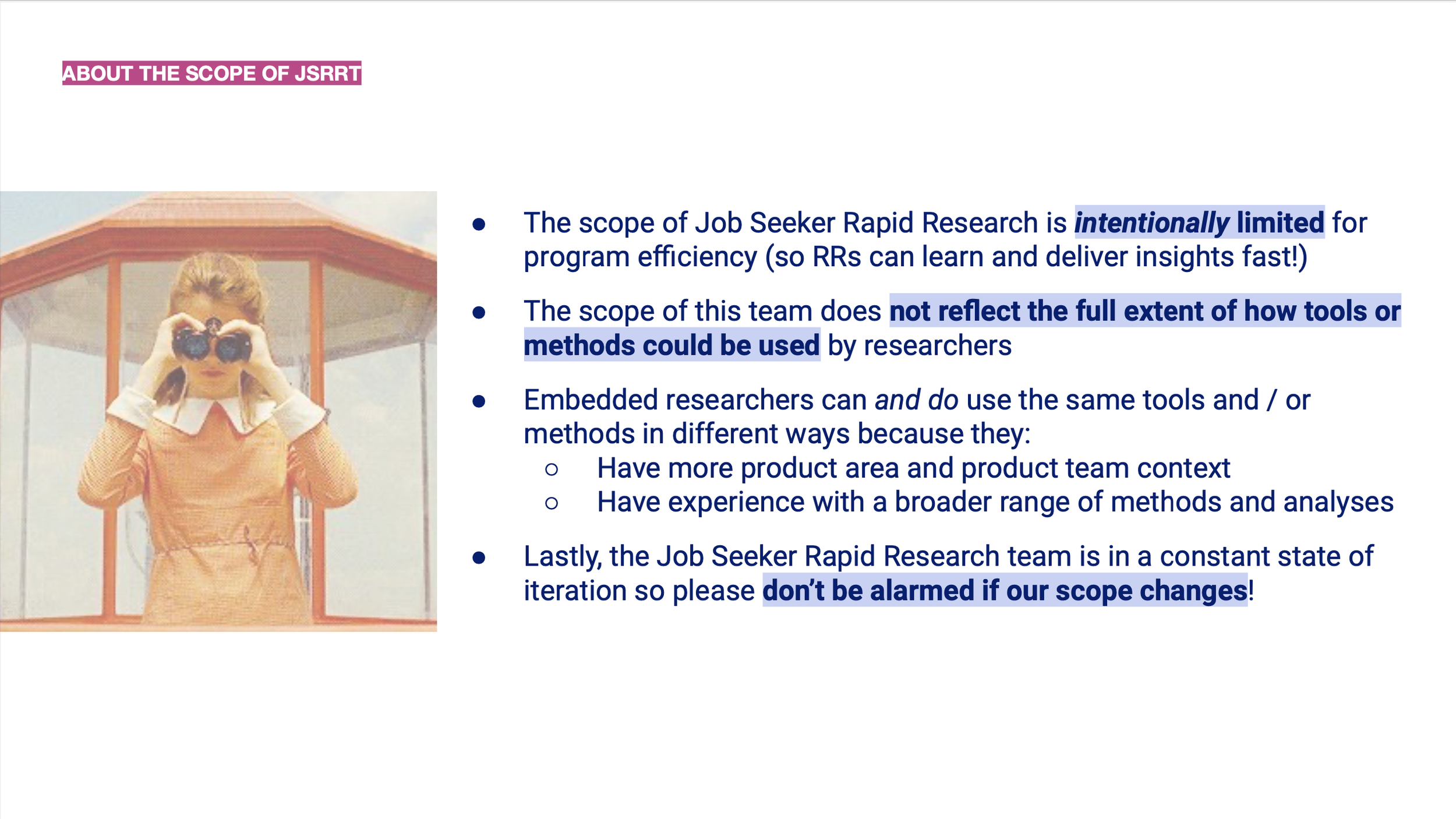IndeeD RAPID RESEARCH
At Indeed, the demand for evaluative research outpaced the capacity of the embedded research team. This bottleneck meant some usability questions were going unanswered or handled inconsistently, compromising product quality and slowing down design iteration. What started as an initiative to scale evaluative research for efficiency evolved into something much more meaningful: an opportunity to mentor early-career researchers, create pathways into UX, and advance Indeed’s mission to help people get jobs while scaling research impact across the organization.
Want to know how to cook up your own rapid research program? Read the published article here at Indeed Design!
UNDERSTANDING THE PROBLEM
To ensure we designed the right program for the right needs, I began by understanding how research was currently being requested and conducted, and where it was falling short. Key questions included:
What prevents non-researchers from running usability tests on their own?
Where are UXRs being pulled into work that could be streamlined or delegated?
What kind of support and oversight is required to maintain research quality?
What are the barriers to scale—licensing, process knowledge, or confidence?
How do other companies operationalize rapid research or unmoderated testing?
To understand internal context and benchmark best practices, I conducted a mixed audit:
Existing internal tools and training
Requests for research help that were being routed informally to researchers
Comparative models from Google, Microsoft, Dropbox, and Spotify—highlighting ways different orgs scale rapid and/or unmoderated testing
From this, it became clear that content alone wasn’t enough. Existing training decks and templates were underutilized and/or forgotten. Non-researchers preferred hands-on guidance and had limited retention after training sessions. It also became apparent that license management and test review were significant logistical blockers.
BUILDING A SOLUTION TO HELP PEOPLE GET JOBS
Rather than doubling down on internal democratization, we chose a different path: welcome non-researchers to participate, but focus our training efforts on developing new researchers from outside the organization. This pivot meant not just solving a capacity problem, it meant building in the spirit of Indeed’s mission to help people get jobs.
Unlike many fast-paced research programs in the industry that rely on junior contractors in ways that can lead to burnout and churn, this initiative was intentionally designed as a six-month, career-building experience for aspiring researchers. Participants were brought in with little to no formal UX training, and throughout their time in the program, they gained hands-on experience running real usability studies, working cross-functionally, and building a portfolio of work they could leverage for their next role.
By offering mentorship, standardized tools, and a clear scope of work, we ensured that the program was not only beneficial to product teams but also meaningfully contributed to the career growth of early researchers fulfilling Indeed’s broader commitment to creating economic opportunity for all.
IMPACT
This program proved to be a success on multiple fronts: delivering fast, reliable evaluative insights for cross-functional teams, easing the workload for embedded researchers, and equipping early-career researchers with the experience and support they needed to successfully enter the UX job market. Despite an industry-wide wave of layoffs, several researchers from the program successfully transitioned into full-time UX research roles.
Overall the benefits of this program included:
Faster insights: Turnaround time for usability tests dropped to just one week.
More research coverage: Studies that were once deprioritized were now handled quickly and consistently.
Less burnout: Embedded UXRs reclaimed time for strategic and generative work.
More opportunity: The program helped launch research careers for early professionals in line with Indeed’s mission to help people get jobs.


